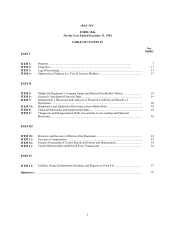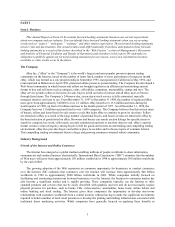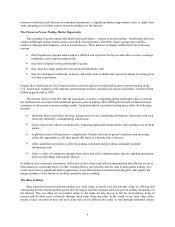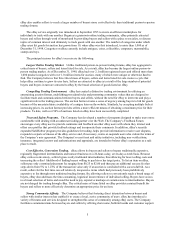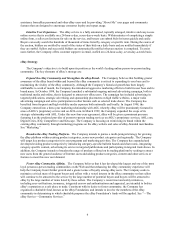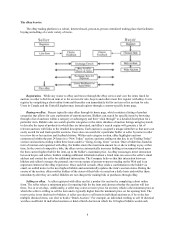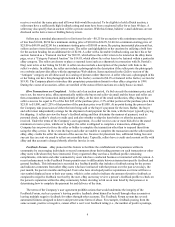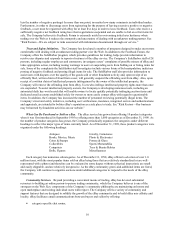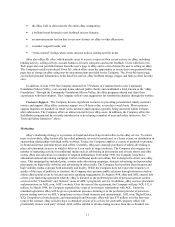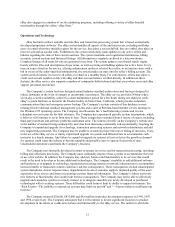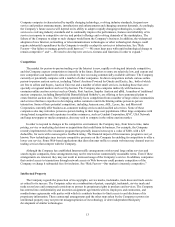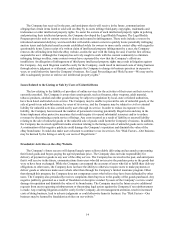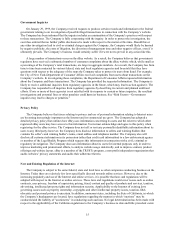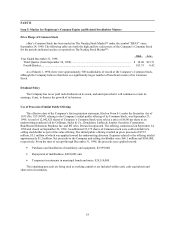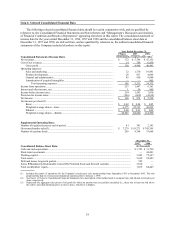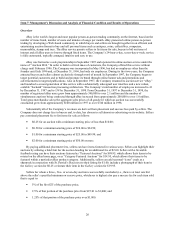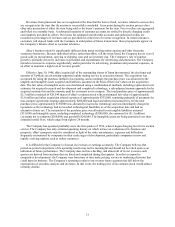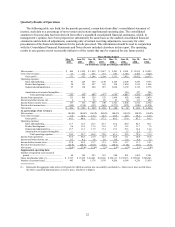eBay 1998 Annual Report Download - page 12
Download and view the complete annual report
Please find page 12 of the 1998 eBay annual report below. You can navigate through the pages in the report by either clicking on the pages listed below, or by using the keyword search tool below to find specific information within the annual report.12
eBay also engages in a number of on-site marketing programs, including offering a variety of eBay-branded
merchandise through the online “eBay Store.”
Operations and Technology
eBay has built a robust, scalable user interface and transaction processing system that is based on internally-
developed proprietary software. The eBay system handles all aspects of the auction process, including notifying
users via email when they initially register for the service, they place a successful bid, they are outbid, they place an
item for sale and an auction ends. Furthermore, the system sends daily status updates to any active sellers and
bidders regarding the state of their current auctions. The system maintains user registration information, billing
accounts, current auctions and historical listings. All information is regularly archived to a data warehouse.
Complete listings of all items for sale are generated every hour. The system updates a text-based search engine
hourly with the titles and descriptions of new items, as well as pricing and bidding updates for active items. Every
time an item is listed on the service, a listing enhancement option is selected by a seller, or an auction closes with a
bid in excess of the seller-specified minimum bid, the system makes an entry into the seller’ s billing account. The
system sends electronic invoices to all sellers via email on a monthly basis. For convenience, sellers may place a
credit card account number on file with eBay and their account balance is billed directly. In addition to these
features, the eBay service also supports a number of community bulletin board and chat areas where users and eBay
support personnel can interact.
The Company’ s system has been designed around industry standard architectures and has been designed to
reduce downtime in the event of outages or catastrophic occurrences. The eBay service provides 24-hour-a-day,
seven-day-a-week availability, subject to a short maintenance period for a few hours during one night per week.
eBay’ s system hardware is hosted at the Exodus facility in Santa Clara, California, which provides redundant
communications lines and emergency power backup. The Company’ s system consists of Sun database servers
running Oracle relational database management systems and a suite of Pentium-based Internet servers running on
the Windows NT operating system. The Company uses Resonate Inc.’ s load balancing systems and its own
redundant servers to provide for fault tolerance. The Company has experienced periodic system interruptions, which
it believes will continue to occur from time to time. These outages have stemmed from a variety of causes, including
third-party hardware and software problems and human error. The volume of traffic on the Company’ s website and
in the number of auctions being conducted by users has been increasing continually and exponentially, requiring the
Company to expand and upgrade its technology, transaction processing systems and network infrastructure and add
new engineering personnel. The Company may be unable to accurately project the rate or timing of increases, if any,
in the use of the eBay service or timely expand and upgrade its systems and infrastructure to accommodate such
increases in a timely manner. Any failure to expand or upgrade its systems at least as fast as the growth in demand
for capacity could cause the website to become unstable and possibly cease to operate for periods of time.
Unscheduled downtime could harm the Company’ s business.
The Company uses internally developed systems to operate its service and for transaction processing, including
billing and collections processing. The Company must continually improve these systems to accommodate the level
of use of its website. In addition, the Company may add new features and functionality to its services that would
result in the need to develop or license additional technologies. The Company’ s inability to add additional software
and hardware or to upgrade its technology, transaction processing systems or network infrastructure to accommodate
increased traffic or transaction volume could have adverse consequences. These consequences include unanticipated
system disruptions, slower response times, degradation in levels of customer support, impaired quality of the users’
experience on its service and delays in reporting accurate financial information. The Company’ s failure to provide
new features or functionality also could result in these consequences. The Company may not be able to effectively
upgrade and expand its systems in a timely manner or to integrate smoothly any newly developed or purchased
technologies with its existing systems. These difficulties could harm or limit its ability to expand its business. See
“Risk Factors—The inability to expand our systems may limit our growth” and “—System failures could harm our
business.”
The Company incurred $28,000, $831,000 and $4.6 million in product development expenses in 1996, 1997
and 1998, respectively. The Company anticipates that it will continue to devote significant resources to product
development in the future as it adds new features and functionality to the eBay service. The market in which the


